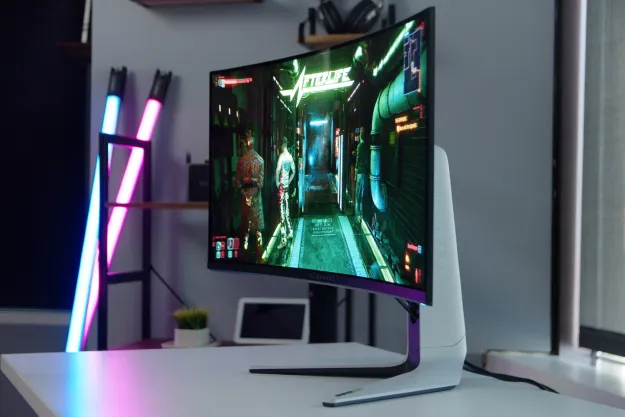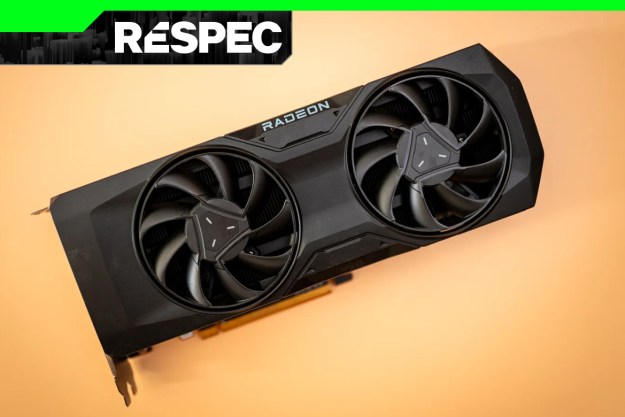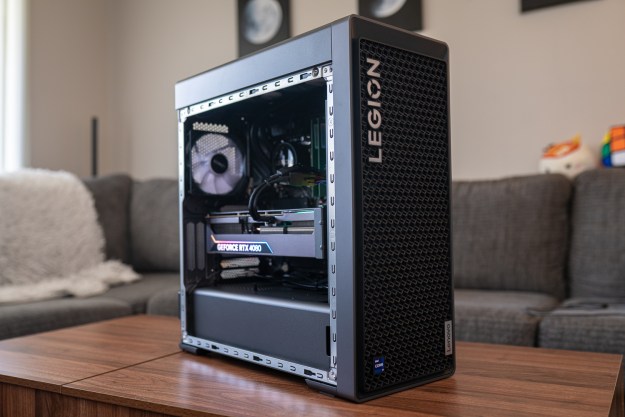
If you’re a hardcore gamer then you are, know it or not, the target for the ASUS Republic of Gamers. The company’s gaming sub-brand revealed a number of new products at CES that range from absolutely awesome to still pretty darn cool.
The highlight was no doubt ASUS’ Ares II video card. This monster crams two Radeon HD 7970 GPUs and six gigabytes of RAM in a single circuit board, making it the fastest single video card in the world. A water cooler is integrated into the card, as well, so potential buyers will need a place to fit the card’s radiator. As can be seen in the photo above, the card is an absolute giant. It took up a sizable portion of the space available in CoolerMaster’s massive Cosmos II case. Speaking of availability, it’s not yet announced, nor is the price.

Another serious piece of hardware is the ASUS RAIDR PCIe solid state drive. It has not one but two solid state drives that have been paired in RAID0. This doesn’t increase capacity but it does drastically increase performance. We’ve the advantage of this configuration in laptops like the Origin EON17 – but ASUS was light on details. They haven’t revealed any specifics about storage controller, capacity, or estimated performance.

ASUS also showed off a pair new VG248QE monitors. This gaming-focused displays offers 1080p and a 144 Hz refresh rate that allows for excellent reproduction of movement. A demo showing a high-speed screensaver made the benefits of this obvious when we began to take photos – our camera couldn’t keep up. Trust us, it’s clear as day when viewed in person. ASUS will start selling the monitor this month. We were told to expect pricing around $280, though that’s not set in stone.
Editors' Recommendations
- The war between PC and console is about to heat up again
- Intel Battlemage graphics cards: release date speculation, price, specs, and more
- Gamers are reportedly returning Intel Core i9 CPUs in droves
- 5 GPUs you should buy instead of the RTX 4070
- Nvidia DLSS is amazing, but only if you use it the right way


